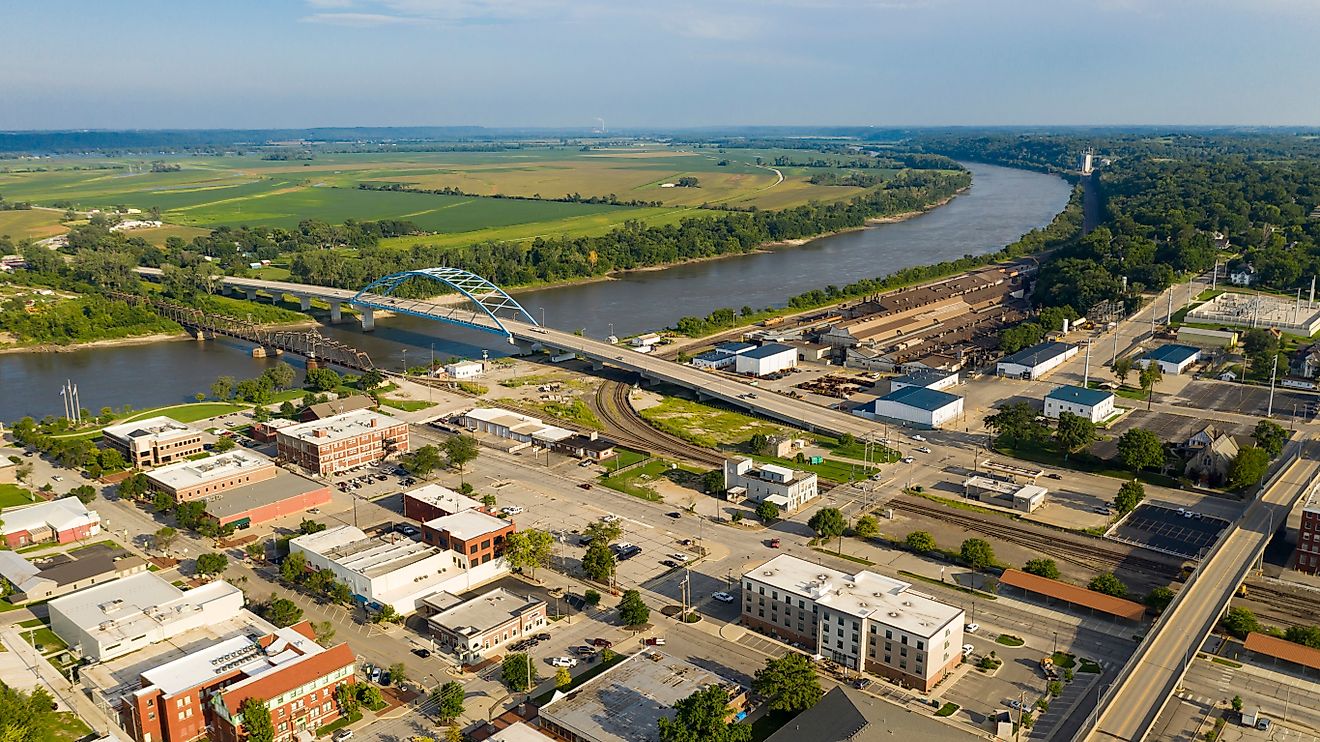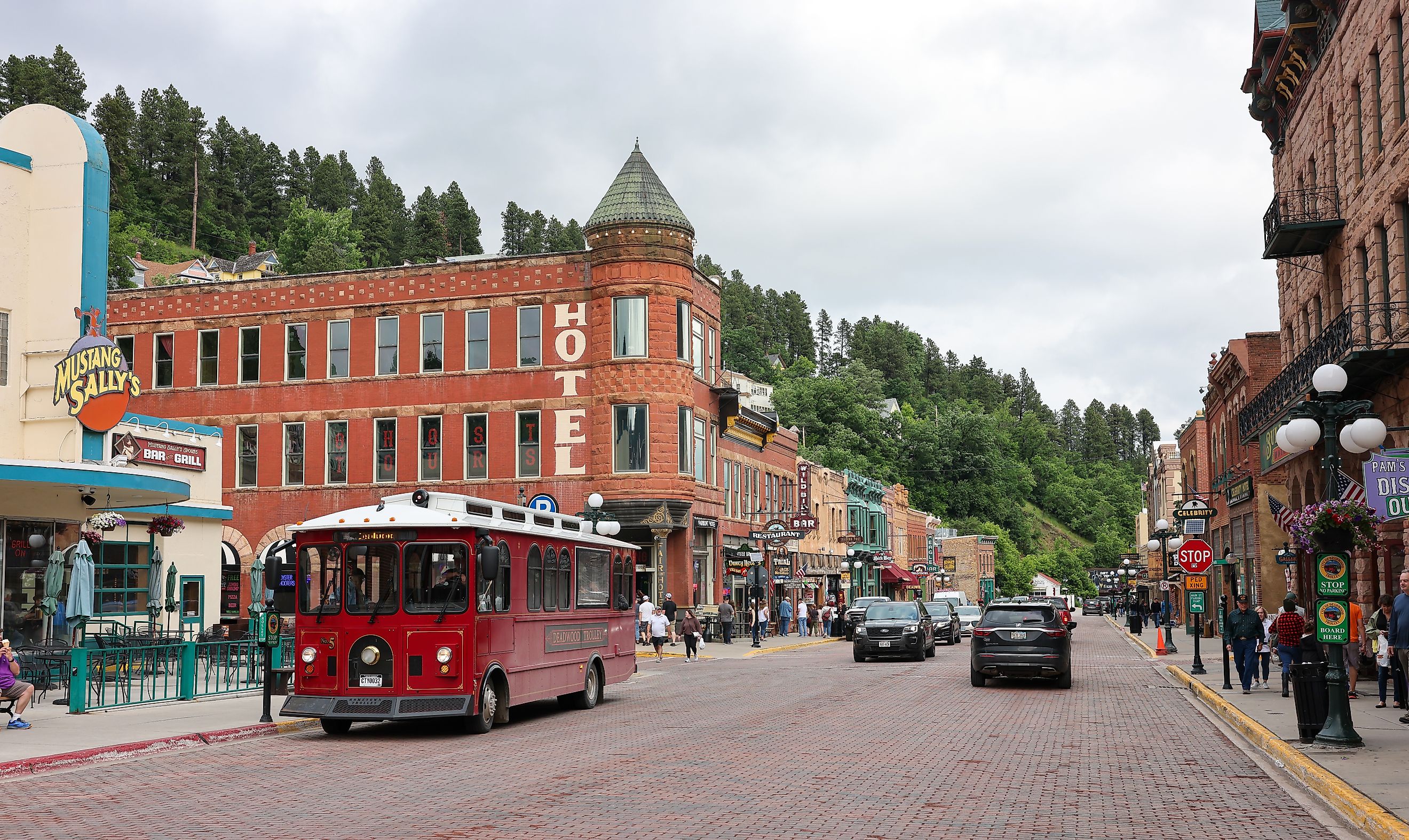
10 Most Historic Small Towns to Visit in South Dakota
South Dakota is a playground for history buffs, especially across its small towns where the glory of past eras endures and remains unshaken by civilization. Most of these towns are deeply rooted in the 1876 gold rush, which brought massive attention and development to the state. Additionally, some towns also boast other historical attractions of national repute, like Mount Rushmore Presidential Memorial and the Mammoth archaeological site. These attractions, alongside museums, landmarks, and districts, make these towns some of the most historic in America. From Custer to Hot Springs, here are 10 towns in South Dakota to visit for an immersion into the rich history of the Midwestern region.
Hot Springs
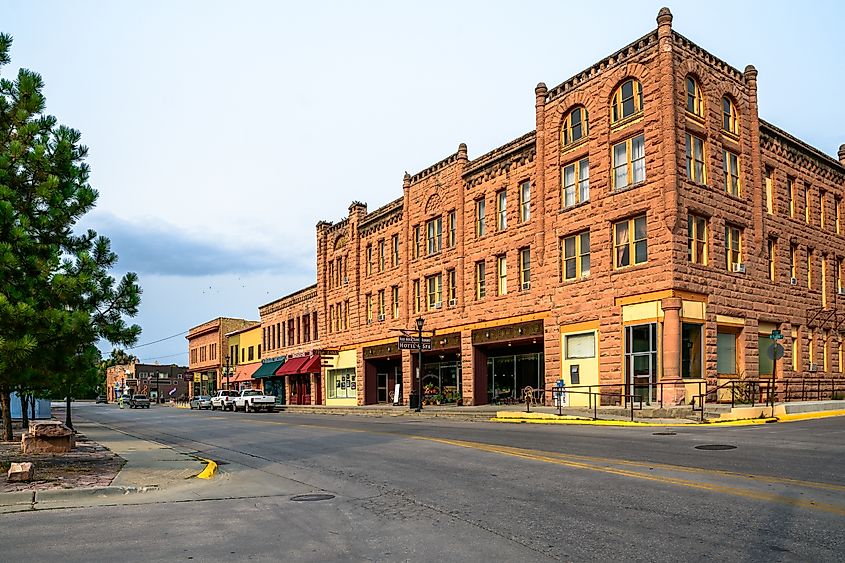
Famed for its warm springs that attracted the Cheyenne and Sioux people, Hot Springs got its first European settlers in the late 19th century. It was known as Minnekahta, the Lakota word for Hot Springs, but later settled for its English translation in 1882. The town was incorporated in 1890 and became a foremost tourist destination. One of the town’s highlight attractions is the Mammoth Site, boasting a large collection of mammoth remains. Explore this massive heritage site, walk through its ice age exhibits, and proceed to Pioneer Museum, built in 1893, to learn about the town's roots and founders. Afterward, enjoy a movie at the Hot Springs Theater and then relax at the Moccasin Springs Natural Mineral Spa.
Spearfish
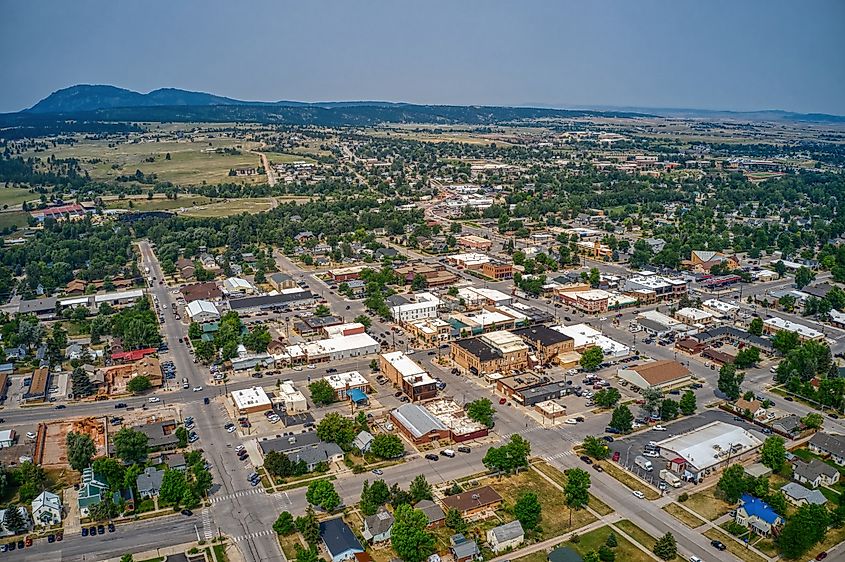
Spearfish, one of the most populous towns in South Dakota, was founded at the mouth of its namesake canyon in 1876 following the Black Hills Gold Rush. The town served as a supplier of food items to the mining camps in the hills and grew from this role. A hundred years later today, visitors here are invited to the High Plains Western Heritage Center, where artifacts and exhibits offer a glimpse into the lives of the pioneers who shaped the High Plains region. Afterward, visitors can check out the D.C. Booth Historic National Fish Hatchery & Archives to explore a museum focused on the history of fish hatcheries and marine life in South Dakota. Away from history, enjoy a scintillating performance at the Matthews Opera House and Arts Center and head outdoors to Spearfish Canyon to hike and see scenic waterfalls.
Madison
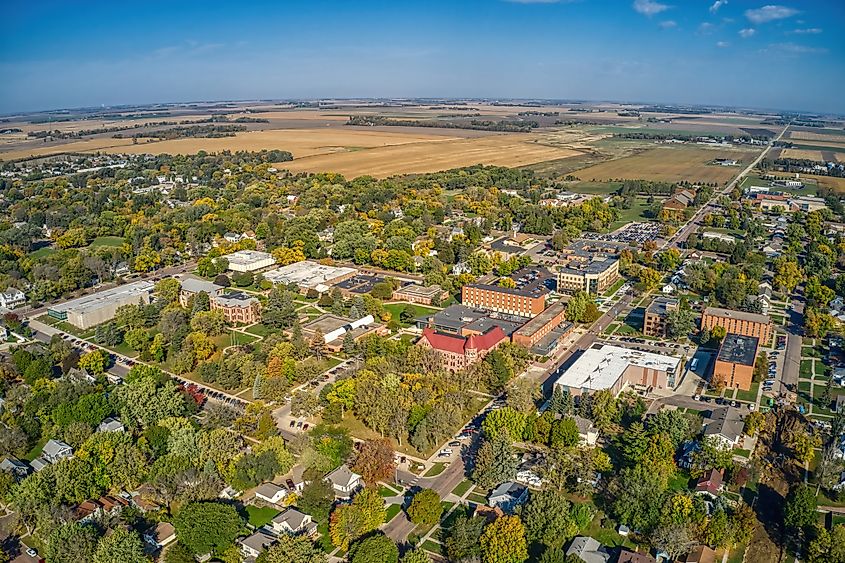
Aerial view of a public state university in Madison, South Dakota.
The history of Madison dates back to the 1870s when it was founded near two lakes, Lake Herman and Lake Madison, and designated as the county seat of Lake County. For decades, the town grew rapidly, and it is famous for hosting the Dakota State University (founded in 1881). Madison is also a hot spot for history, especially with attractions like the Prairie Village - a living history museum housing over 40 restored old buildings, including ancient saw mills, agricultural displays, and other significant relics. Visitors are also welcome to explore Victorian-era furnishings in four exhibit rooms at the Smith-Zimmermann Museum at Dakota State University. For more history, visit the Lake County Museum to learn about the county’s storied past via artifacts and exhibits, and check out artworks at John Green Art Studios before leaving.
Hill City
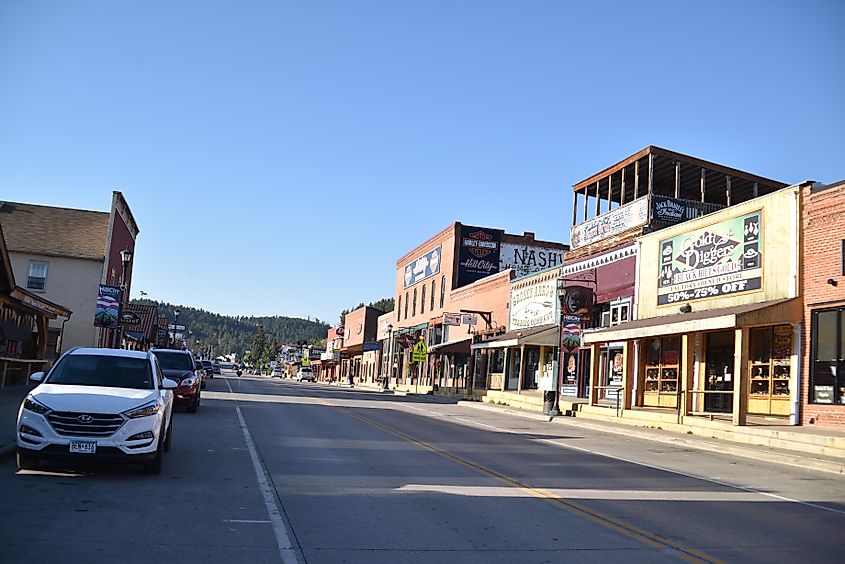
Main Street in Hill City, South Dakota. Editorial credit: Paul R. Jones / Shutterstock.com
Hill City is the oldest town in Pennington County, named after its position in the heart of the Black Hills. Miners first settled here in 1876 following the Black Hills Gold Rush but relocated after gold was discovered north of the area. In 1883, the discovery of tin saved Hill City from becoming a ghost town and established it as a tin mining hub. The town is home to the Black Hills Museum of Natural History, housing exhibits of fossils, dinosaurs, fishes, reptiles, birds, and other creatures from prehistoric times. Hill City also hosts the South Dakota State Railroad Museum, where one can uncover the state’s railroad history through interactive exhibits, displays, and artifacts. More history is available at the Civil Conservation Corps Museum of South Dakota as it features old photographs and artifacts of men who have contributed to the growth of tourism in the state. While exploring, be sure to include a stop at the Jon Crane Gallery to marvel at stunning artworks.
Mitchell
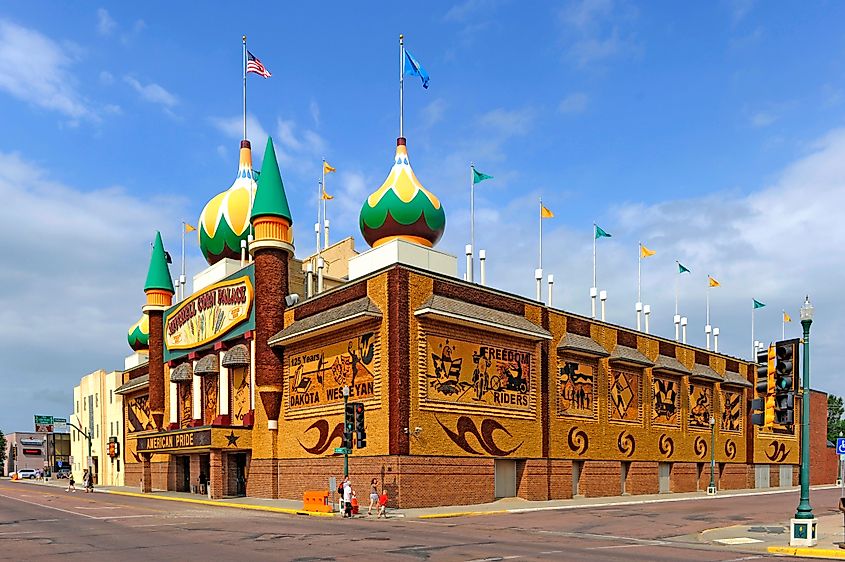
The famous Mitchell Corn Palace in South Dakota. Editorial credit: Dennis MacDonald / Shutterstock.com
Mitchell is a touristy town along the James River, first settled in 1879 and incorporated in 1881. The town is popularly known as the Palace Town for its famous Corn Palace. Also known as the World’s Only Corn Palace, this magnificent building is decorated with hundreds of corn and grains, forming murals on its exterior. Explore this one-of-a-kind palace with a camera and proceed to the Dakota Discovery Museum to see many historic homes and galleries depicting the life and times of early pioneers. The town is also home to the Mitchell Prehistoric Indian Village, an archaeological site preserving an Indian village that dates back more than a thousand years. Outdoor buffs in town can visit Lake Mitchell to hike and bike its trails or fish, boat, and kayak on the water. After all the adventures, relax at the Odyssey Luxury 5 Theater to see an enthralling movie.
Pierre
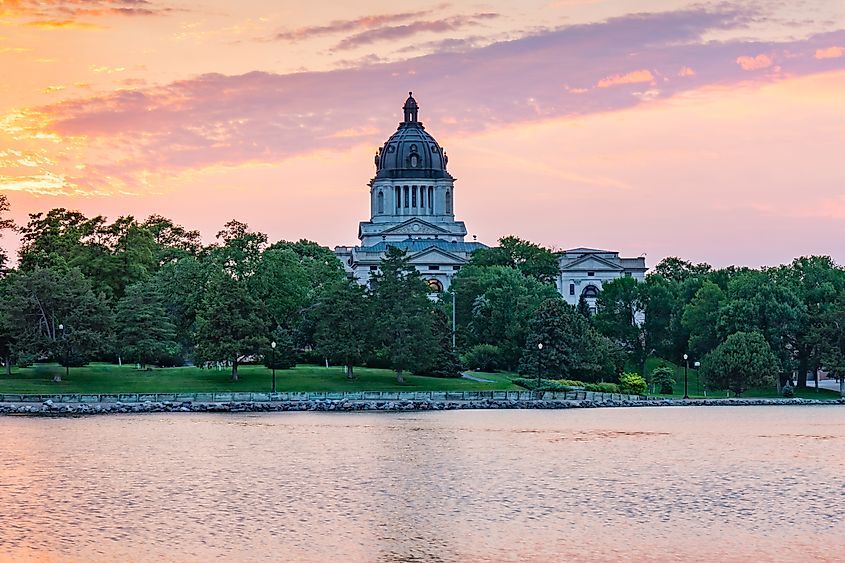
South Dakota Capitol Building along Capitol Lake in Pierre, SD.
Pierre, the capital of South Dakota, was founded in 1880 on the east bank of the Missouri River. The city was designated as the capital following the creation of the South Dakota state in 1889 due to its centralized location. As a capital city, Pierre is home to several heritage sites worth visiting, such as the State Capitol, which was built in the early 1900s. The South Dakota National Guard Museum is another top attraction here, housing artifacts, memorabilia, photography, and documents of the National Guard and its operations from the 1800s. In addition to the individual sites, visitors are also invited to take a stroll through some of the town’s areas, like the Upper Pierre Street Commercial Historic District and Central Block, to marvel at structures dating to the 1800s. For a wholesome experience, step away from the history and head to LaFramboise Island Nature Area to boat, canoe, and kayak on the Missouri River.
Yankton
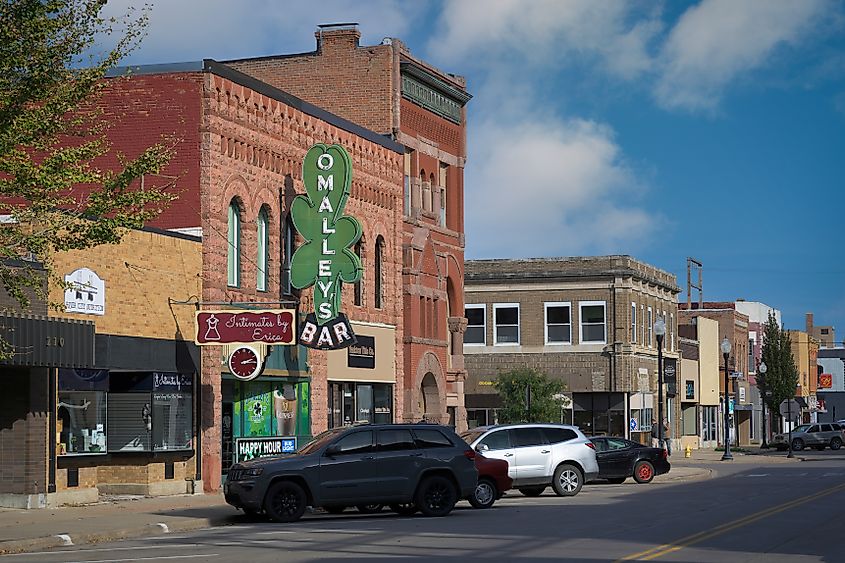
O'Malley's Irish Pub in downtown Yankton, SD. Editorial credit: Nagel Photography / Shutterstock.com
Also known as the Mother City of the Dakotas, Yankton is an old town along the Missouri River that was visited by the Lewis and Clark Expedition in 1804. Around 1857, it was occupied by native Yankton Sioux Tribes but officially opened for settlement in 1858 and then served as the first capital of Dakota Territory from 1861 to 1883. The town has attractions like the Dakota Territory Museum, featuring artifacts, Native American exhibits, and relics of pioneers. More attractions here include the Dakota Territorial Capitol Replica Building on Levee Street and the 1886 Cramer-Kenyon Heritage Home in the riverfront historic district. Meanwhile, visitors can also admire the Yankton Meridian Lift Bridge over the Missouri River connecting Nebraska and unwind at the Riverfront Park below with picnics for a more wholesome experience. Notably, Yankton is a thriving art and theatre town, so while visiting, be sure to check out some artworks at the Yankton Area Arts Gallery and also grace the Dakota Theatre for some entertainment.
Deadwood
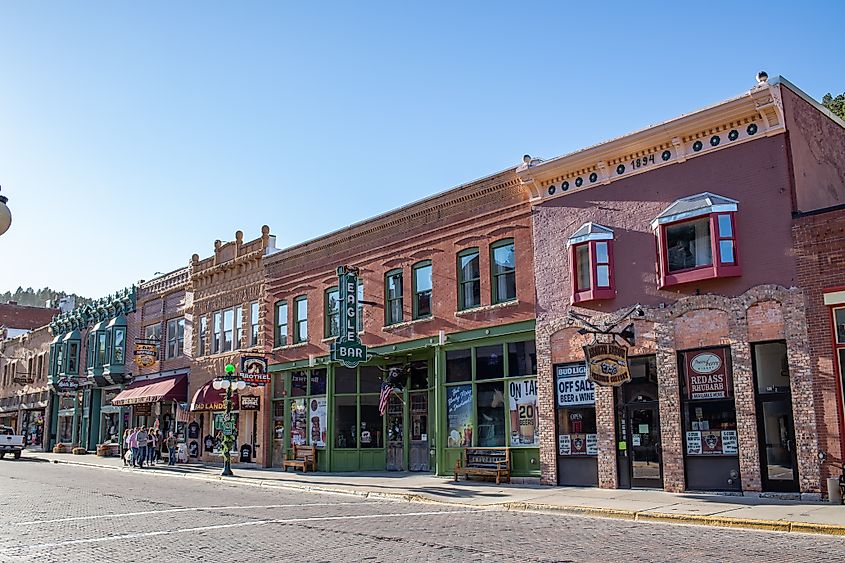
Deadwood is a mountain town named after the dead trees found in the area by its early settlers. The town was founded in 1876 following the discovery of gold near Custer. This discovery kickstarted the famous Black Hills Gold Rush in the Dakota Territory, which led to the establishment of several towns in the state. The entire town of Deadwood is designated a National Historic Landmark for its Gold Rush-era history. While here, start by visiting the Broken Boot Gold Mine to tour underground defunct gold mines. Next, visit the Adams Museum to learn about the history of the Black Hills and see the home of one of the town's founders. Proceed to Tatanka: Story of Bison to see life-sized Bison sculptures and Native American exhibits. Hang out afterward at the Buffalo Bodega Complex to play casino games, enjoy steaks, and drink wine.
Keystone
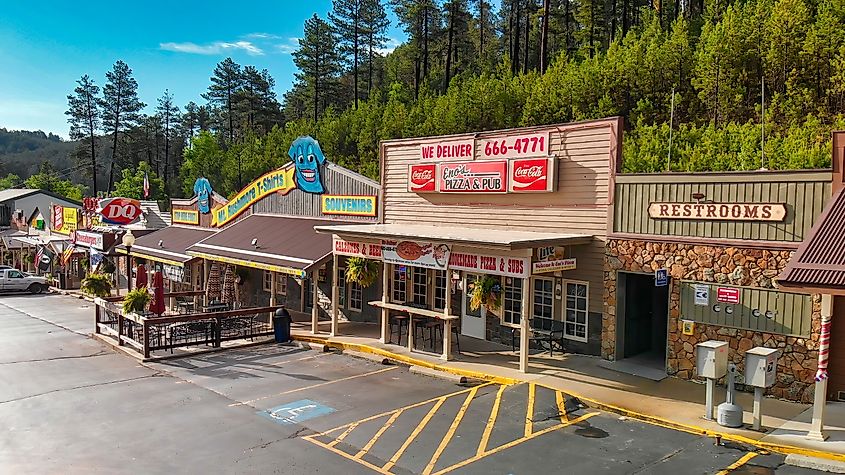
Main street of Keystone, South Dakota. Editorial credit: GagliardiPhotography / Shutterstock.com
Keystone is a small town in the Black Hills, renowned as the home of Mount Rushmore. It was founded in 1883 as a mining town and was named after a local mine in the area. The town has since risen to become one of the most famous tourist destinations in South Dakota. Mount Rushmore National Monument alone attracts millions of tourists yearly as it features the faces of Presidents - George Washington, Thomas Jefferson, Abraham Lincoln, and Theodore Roosevelt carved into Mount Rushmore. Keystone is also home to the National Presidential Wax Museum, which hosts oil painting exhibits and several life-sized wax figures, including those of all US presidents to date. While in town, be sure to visit the Keystone Museum, to immerse in more history with pioneer exhibits. Before leaving town, head to the Rushmore Adventure Park to ride on a chairlift, hike on the mountain, and zip line with great views.
Custer

Custer is a quaint town brimming with history as it is the oldest town in the Black Hills region founded by European Americans in 1875. The town rose to the limelight after the discovery of gold on its east borders. Visitors can learn about the town’s Black Hills Gold Rush Days at the Four Miles Old West Town, a living history museum featuring gold rush artifacts and offering self-guided tours. The 1881 Courthouse Museum is another fascinating destination in town to learn about local and regional history. On the outdoors, the 71,000-acre Custer State Park in town is the first and largest in South Dakota and presents abundant sightseeing and hiking opportunities for visitors. Highlights in the park include - Sylvan Lake for water sports and picnicking and The Needless, a series of granite pillars, spires, and towers. When hungry, dine at the Begging Burro Mexican Bistro to savor authentic Mexican fares.
Uncover the Living History of South Dakota’s Small Towns
Plunge into the storied past of pioneers and rich Native American history in these charming towns of South Dakota. Discover astonishing relics and artifacts that have survived centuries long forgotten and learn about life during these ancient times. Beyond history, these small towns are nestled in the foothills of iconic mountains like Rushmore and the magnificent Black Hills, creating a mix of exciting experiences to cherish on a visit.




